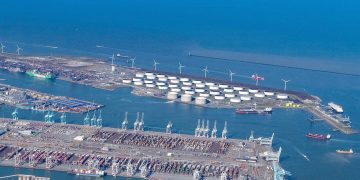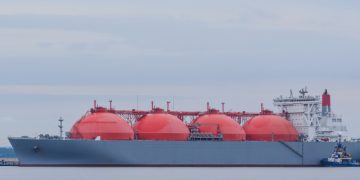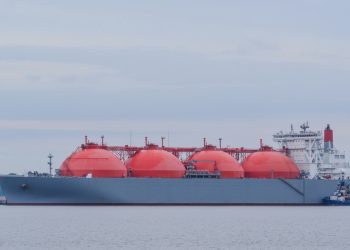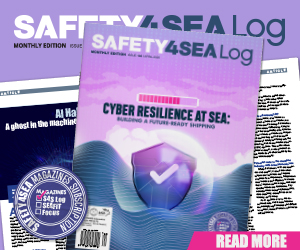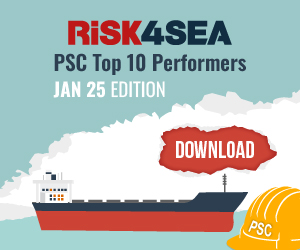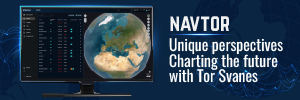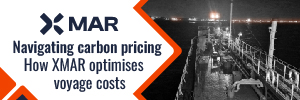During the 2025 GREEN4SEA Athens Forum, Dr. John Kokarakis, Technical Director, SEEBA Zone, Bureau Veritas, delivered an insightful presentation on the challenges and strategies for maritime decarbonization, focusing on FuelEU Maritime compliance and IMO’s mid-term measures.
The maritime industry is at a crossroads. As global and regional regulatory bodies, notably the International Maritime Organization (IMO) and the European Union, introduce midterm environmental measures, shipping companies face an increasingly complex and expensive landscape. These measures, while aimed at reducing environmental impact, cast a looming shadow over the industry’s financial and operational viability.
These measures loom like Damocles’ sword over the industry. Sustainability, it seems, is not without its hidden costs.
Understanding the Fuel EU Maritime regulation
One of the most pressing concerns is the EU’s FuelEU Maritime regulation, a key component of the broader Fit for 55 climate package. Set to take effect on January 1, 2025, this regulation aims to reduce greenhouse gas (GHG) emissions from the shipping sector by promoting the adoption of renewable and low-carbon fuels.
FuelEU Maritime complements, but remains distinct from, the EU Emissions Trading System (ETS). Like the ETS, it extends its scope to include the EU’s outermost regions and small islands, recognizing the unique challenges these areas face due to their geographic isolation and heavy reliance on maritime transport. Both systems rely on Monitoring, Reporting, and Verification (MRV) data and follow a phase-in approach to implementation.
However, the two frameworks differ significantly in their mechanisms: while the ETS penalizes how much fuel is burned, FuelEU Maritime penalizes what type of fuel is burned. Under FuelEU Maritime, responsibility falls entirely on the ISM dock holder, with no application of a polluter-pays principle.
The regulation uses well-to-wake metrics to assess emissions, incorporating well-to-tank emissions, which add roughly 15% to the overall intensity. Fuels must meet an intensity threshold measured in grams of CO₂ equivalent per megajoule, with biogenic fuels under 33 gCO₂e/MJ qualifying. By this measure, gray methanol, ammonia, and hydrogen perform worse than conventional fossil fuels.
In addition to promoting the use of renewable and low-carbon fuels, the regulation seeks to accelerate their large-scale production, although actual production levels remain very low at present. GHG intensity limits will become progressively stricter over time. FuelEU Maritime also mandates the use of onshore power supply for container and passenger ships while at berth in EU ports.
As part of the Fit for 55 package, FuelEU Maritime is supported by a renewable fuel directory and aligns with other legislative tools like the Alternative Fuels Infrastructure Regulation, carbon pricing under the ETS, and energy taxation through the Energy Taxation Directive (ETD) together forming a comprehensive package of interlinked policies.
These regulations fall under the category of Market-Based Measures (MBMs), which include economic instruments like levies and technical standards, such as the global fuel standard, the strictest and most complex of these, established under FuelEU Maritime. Despite its ambition, this regulation is not without loopholes, making its implementation particularly challenging.
Compliance: Pay, bank, or borrow
The multi-million-dollar question is: What should be done if the computed annual intensity, emissions divided by energy consumed, exceeds the required target for that year?
Available compliance options are shown in the diagram below. The simplest, yet costliest, option is to pay the penalties. If the attained intensity is below the target, a surplus is generated. This surplus can be used by the fleet to cover other vessels, provided they share the same verifier.
Surpluses can also be banked for stricter future requirements. Alternatively, a ship with a deficit may borrow up to 2% of the non-compliant deficit. These are the 2P (Pay and Pull) and 2B (Borrow and Bank) options.
For example, a vessel burning green methanol in 2030 can cover 14 vessels using low-sulfur fuel. By 2035, this drops to five vessels, and to two by 2040. Over time, compliance becomes tougher.
Energy efficiency measures not quite included
However, under FuelEU, some measures are considered beneficial because they reduce greenhouse gas intensity, while others, although they lower fuel consumption, do not affect intensity. For example, energy-saving devices that improve flow to the propeller can reduce overall fuel use but do not alter the greenhouse gas intensity.
Finding loopholes
Taking a closer look, there’s a loophole for international voyages: if the trip is outside the EU but includes at least one EU port, you’re free to allocate the fuel with the lowest greenhouse gas intensity to the EU part of the trip, which typically represents 50% of the energy used.
Self-explanatory examples involve mixtures of LNG and MDO, as well as biodiesel and MDO. Evidently, the priority is to “spend” the biodiesel and LNG during the EU portion of the voyage.
IMO Circular 905: Key considerations
On the subject of biofuels, there are three different emission factors used under three different regulations. The most generous is the EU ETS, and the strictest, unfortunately, is FuelEU Maritime.
Regarding the International Maritime Organization, IMO Circular 905 is an IMO circular issued last year that deals with biofuels. Let’s not forget that the IMO does not yet have a well-to-tank methodology. So, they made an assumption: biogenic fuels must be sustainable. The total intensity must be less than 33 grams of CO₂ equivalent per megajoule. When it comes to blends, B10 means 10% biofuel. The total emission factor of the blend is computed by weighing the components by energy, using the lower calorific value (LCV).
Compliance at a glance
A cumulative example brings us to several important conclusions:
- Paying the penalty is the costliest option.
- LNG and Bio-LNG are the least expensive compliance options. FuelEU Maritime therefore promotes LNG.
- Depending on the combustion cycle, fossil LNG can assist for the first 10 to 15 years. Banking can further extend compliance up to 2045.
- Waste-based biodiesel is the second-best option.
- Bio-MGO combined with wind-assisted propulsion performs better than without it.
- Energy efficiency measures may not help much.
- Blue ammonia is not the best option.
- The case with e-methanol (green methanol) appears deceiving because it does not include revenue from pooling. Pooling is not free—if you join another company’s pool, you must pay to be part of it.
And now, the billion-dollar question: will the EU withdraw its regional regulations after the IMO establishes its market-based measures?
The views presented are only those of the authors and do not necessarily reflect those of SAFETY4SEA and are for information sharing and discussion purposes only.
Above article has been edited from Dr. John Kokarakis’ presentation during the 2025 GREEN4SEA Athens Forum.
Explore more by watching his video presentation here below




















